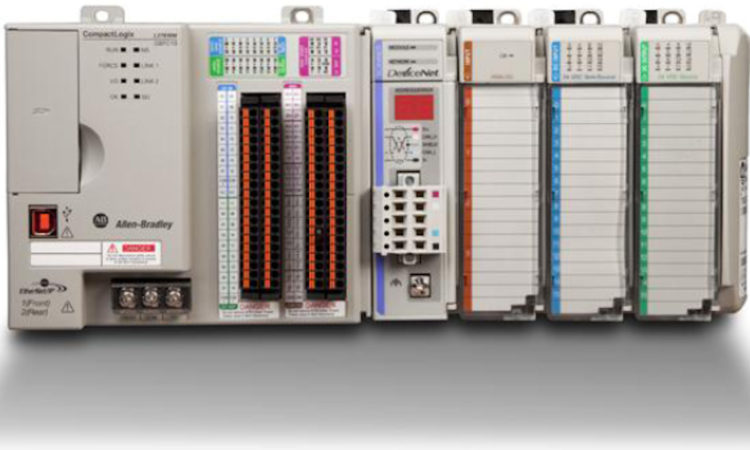Programmable Logic Controller (PLC) – Market and trends in Australia
Programmable Logic Controller (PLC) – Market and trends in Australia
Mar 29, 2018

Developing skills in PLC (Programmable Logic Controller) programming and fault-finding, is becoming critical with the increase of automation in the Australian industry. The oil & gas and the mineral processing industry mainly use PLC/ DCS control systems now. And electricians and engineers are expected to repair and troubleshoot these systems. Generally, older electricians and engineers have limited skills in this area, and younger electricians do not have enough experience in PLC programming and fault finding. The solution is to undertake a post trade course that can help to upskill in PLC programming and fault finding. These are covered under UEE31220, UEE40420 and UEE50220 offered by PMV.
Programmable Logic Controller – Market Insights
Key Australian market insights into programmable logic controller include
- Trends, trend forecast, and growth drivers about the PLC market
The increasing requirement for solutions that offer safety, energy efficiency, better productivity, and sustainability is pushing the growth of the global market. The rising development of smart cities, the huge demand for networking, and the high prevalence of personal mobile devices is enabling the integration of modern PLC frameworks in the global market. The growing penetration of smartphones and network connectivity will also help support the development and adoption of home and industrial PLC automation solutions.
- Change in the role of an Industrial Electrician with PLC Controls and SMART instruments in Industry
Several industries in Australia, such as: oil and gas, mineral processing, meat processing, chemical process, coal steam gas have grown rapidly over the last 5-10 years. These industries have implemented digital technology by replacing the relay-based controls with PLC control logic and pneumatic instruments with SMART instruments. The extensive use of disruptive technologies like PLC with associated Human Machine Interface and SMART instruments, has unfortunately made a standard industrial electrician unemployable if they are not familiar with such technical advances.
- PLC Market – By End-Users
The end-user segment in the Programmable Logic Controller market is categorised into automotive, chemicals & petrochemicals, mining & metallurgy, paper, packaging & printing, food & beverages, water & waste-water treatment, oil & gas, and others.
- The major vendors in this market are:
Schneider Electric SE
Rockwell Automation Inc. with Allen Bradley (AB) PLC
Siemens AG
Mitsubishi Electric Corp.
Omron Corp.
In Australia the market is dominated by the top five vendors listed above and industrial PLC market is dominated by Siemens and AB. PMV offers PLC programming and fault-finding courses in Siemens and AB PLC .
Siemens Vs Allen Bradley PLC
Rockwell (AB PLC) and Siemens are two of the biggest companies that are dominating the current PLC industrial market in Australia. Here is a comparison of these heavyweights.
Hardware
- When it comes to hardware, both these automation tools work the same way and are reliable.
- For AB PLC, you need to connect the AB power supply and the AB rack as well. You need to install additional cards for safety communication ports.
- Siemens works with any 24V DC power supply, they come with built-in safety communication ports.
- AB uses American native protocols such as EthernetIP, DeviceNet and ControlNet. Siemens uses European protocols such as ASI, Profinet and Profibus.
Automation Procedure Management
- AB is easy to configure and manage, the intuitive interface allows users to easily monitor and manage the system. Features such as communication with 3rd party hardware, mass production of code and export/import tags from Excel to SCADA databases make it popular among end users.
- Siemens seems to be complex for regular maintenance staff and require more computer programming background, however, it offers more options to program and customise the process.
- Siemens offers two safety runtime groups, meaning you can divide the infrastructure into two groups and set controller parameters with different priorities and time cycles. This ability allows you to program blocks and download them to the PLC without stopping any process. With AB PLC, this is not possible as it supports only one safety group.
- Siemens also offers more programming techniques such as FBD, SCL, STL, LAD etc. However, high-end AB systems support function blocks as well as multiple programming techniques.
If you are looking to upgrade your knowledge and skills in PLC programming and fault-finding courses in Siemens and AB PLC with HMI interface, industrial networking, testing and fault finding of SMART field instrumentation, PMV offers hands-on nationally recognised training.
Support & Pricing
The AB PLC is expensive when compared with that of Siemens PLC solutions. Siemens offers standard technical support for free. When it comes to Rockwell, technical support charges are based on the amount of hardware installed.
In conclusion, while both these automation systems are similar in most areas, the difference lies in the software segment. AB PLC is easy to use and manage but offers limited customization options. Siemens is comparatively inexpensive for the options it offers as a standard product range. It allows you to program the software to customize different program blocks but requires more computer programming knowledge. AB is more popular in the Australia and US while Siemens enjoys an international and European market with complex manufacturing processes.
Recent Post
Mar 14, 2024
